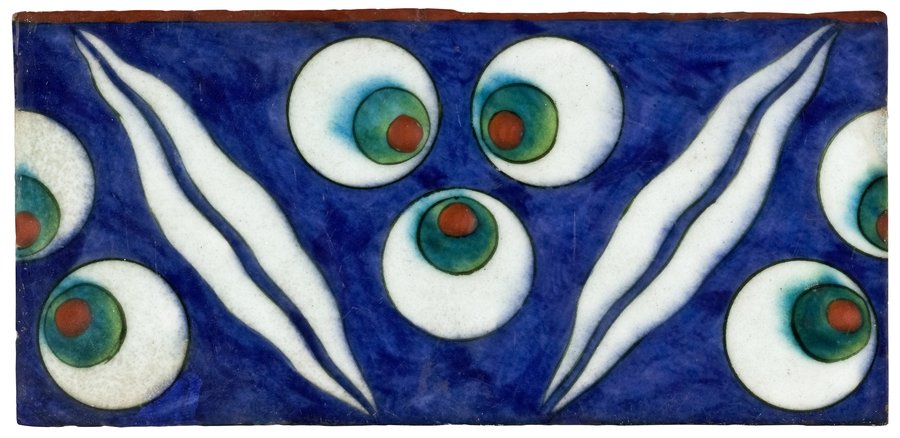
Tile
Museum of Islamic Art
- Title:
- Tile
- Production place:
- Iznik
- Date:
- 1570
- Period:
- Ottoman
- Title:
- Tile
- Production place:
- Iznik
- Date:
- 1570
- Period:
- Ottoman
- Material:
- Fritware, Pigment, Glaze
- Technique:
- Underglaze painting, Glazing
- Dimensions:
- 11.8 × 25.0 cm
This richly decorated rectangular border tile has a cobalt blue background with Çintamani motifs in white, green and red that are divided by paired wavy white lines. Çintamani means ‘auspicious jewel’ in Sanskrit, and in Buddhist iconography the motif represented auspicious flaming pearls. However, in the Ottoman context, the circles and wavy stripes are associated with tiger stripes and leopard spots, a symbol of power and courage. Iznik tile production was revitalized when Ottoman Sultan Suleiman the Magnificent (r. 926-974 AH/1520-66 CE) began commissioning tiles to decorate his newly built mosque in Istanbul. This tile dates to around 977 AH/1570 CE, a period considered to be the height of Iznik production when new colours (such as red and green) were introduced. This tile was probably used as a border for a wider wall decoration, such as those seen in situ in the Rustem Pasha Mosque, Istanbul (built between 968-971 AH/1561-63 CE).



